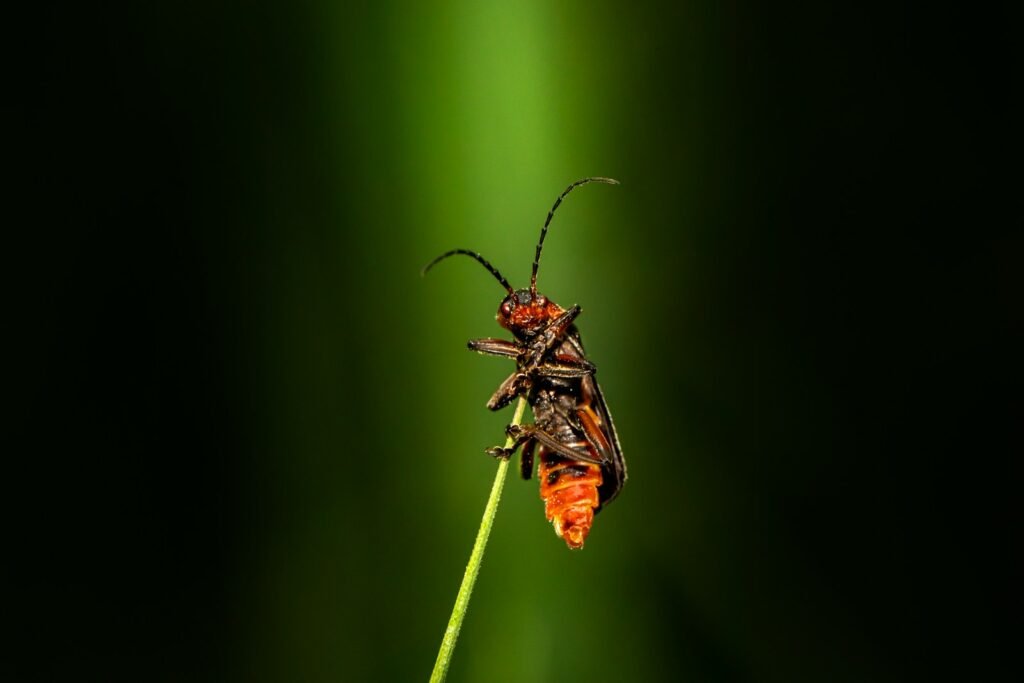At dusk in the Georgia Piedmont, the woods begin to whisper with wings and click with tiny gears, and the cast behind the sound is stranger than fiction. Beyond the familiar butterflies and bees, the state shelters insects that spray noxious mist, drill into dead wood with hair-thin tools, and hunt with stealth that would shame a bobcat. Farmers, hikers, and backyard naturalists are bumping into these natives more often as warm seasons lengthen and suburbs nibble at the forest edge. That creates a living mystery: which species belong here, which are merely visiting, and how do we tell the difference before we reach for a shoe? The answers are surprisingly practical, because these oddballs protect crops, clean up streams, and warn us when ecosystems are out of balance.
The Hidden Clues

Georgia’s strangest insects rarely announce themselves with bright colors; they hide in plain sight until a sharp eye catches a clue. A spiky silhouette on a pear tree might be a wheel bug, a predatory assassin bug whose cog-like pronotum looks engineered rather than grown. A slender twig that squirts a tear-inducing spray is likely the two-striped walkingstick, a native phasmid with a chemical defense that demands respectful distance.
Even the ground writes their signatures: perfect sand funnels betray antlion larvae waiting at the bottom like patient fishermen. At porch lights, a pale green leaf with tails reveals a luna moth that never eats as an adult, living on stored energy to mate and vanish. These hints turn a backyard into a detective story, where every mark, shape, and movement points to a resident with a very specific role.
Meet the Natives: Georgia’s Strangest Insects

The wheel bug, Arilus cristatus, is a stealthy ally in orchards and gardens, piercing pests and sipping them dry with a syringe-like beak. The two-striped walkingstick, Anisomorpha buprestoides, can project a defensive mist that irritates eyes, which makes careful observation smarter than handling. Then there’s the eastern dobsonfly, Corydalus cornutus, whose harmless long-jawed males look fearsome while their aquatic larvae, known as hellgrammites, signal clean, fast-moving streams.
Megarhyssa ichneumon wasps drill into wood with ovipositors that seem longer than their bodies, locating host larvae by scent and vibration like ultra-precise surgeons. The eastern eyed click beetle, Alaus oculatus, flips upright with an audible snap and stares down predators with giant false eyes on its back. Add the southeastern lubber grasshopper, Romalea microptera, which trades flight for bold warning colors and toxic chemistry, and Georgia’s roster starts to read like science fiction grounded in fact.
From Field Nets to Modern Science

For decades, identifying these insects meant nets, hand lenses, and field guides smudged with fingerprints and sap. Today, entomologists layer new tools onto that craft, using acoustic sensors, community photos, and DNA barcoding to resolve tricky lookalikes. A velvet ant that refuses to sit still for a portrait can still be pinned down by a short genetic marker when the specimen allows.
Citizen scientists now supply geotagged observations that map flight seasons and microhabitats in near real time. When records cluster along the Fall Line or light up the Coastal Plain, researchers can test hypotheses about soil, host trees, or temperature. The result is a faster feedback loop, where field notes and molecular data teach each other and raise the odds of catching change as it starts.
Night Shift in the Piney Woods

Georgia’s nocturnal lineup is especially theatrical, and porch lights act like low-budget stage rigs. Luna moths sail in like slow comets; sphinx moths hum over evening primrose with the precision of tiny drones. Click beetles drop from siding with that unmistakable snap, a defensive jolt that startles owls and raccoons as easily as people.
Under bridges and near riffles, dobsonflies emerge from water like armored helicopters, the adults living brief, intense lives built around reproduction. In sandy yards, antlion larvae etch new pits after rain, rebuilding their traps with the same persistence as wave-swept shorebirds. Spend an hour watching and you realize the night is not quiet at all; it just speaks in different registers.
Predators, Pretenders, and Chemical Tricksters

The Carolina mantis, Stagmomantis carolina, is a native ambush hunter whose careful sway mimics leaves moving in a breeze. Wheel bugs patrol plants like silent bodyguards, and their strike is so fast it’s easy to miss unless you slow the moment on video. Southeastern lubbers take another route, advertising their chemical defenses with bold patterns that say, in effect, don’t try me.
Two-striped walkingsticks deploy a targeted spray that pets and people remember, a potent reminder that beauty can burn a little. Giant ichneumons lean on sensory superpowers, zeroing in on vibrations to thread their ovipositors into hidden hosts. Every tactic is a wager written by evolution: hide, hit hard, or tell the world you taste terrible.
Why It Matters

These insects are not curiosities; they are infrastructure, keeping ecosystems functional in ways we ignore at our peril. Predators like mantises and wheel bugs cut down caterpillars and other plant pests, reducing the need for broad-spectrum sprays that can scorch pollinators. Aquatic larvae of dobsonflies help clean streams, and when they vanish, it often means water quality is slipping before we notice.
Compared with blanket chemical control, protecting native predators and parasites is often cheaper, more targeted, and far kinder to beneficial species. Traditional pest management cleaned the slate; modern integrated approaches work with local specialists already on the job. Georgia’s strange insects prove that the best technology can be six legs, a sharp beak, and a good sense of smell.
The Future Landscape

Warming nights and shifting rain patterns are already nudging flight seasons earlier, and long-term records will be crucial to see the trend clearly. Expect more sensors at trailheads, better light-trap cameras, and AI models that flag unusual sightings for expert review. DNA reference libraries will expand, closing gaps that still frustrate identifications in hard-to-reach habitats.
The challenge is separating natural boom-bust cycles from climate-driven range shifts, while also guarding against invasive lookalikes that steal the spotlight. Urban growth adds another twist, creating heat islands that speed development for some species but cook others out of existence. Georgia can lead by linking data from universities, nature centers, and backyard observers into a single, living map of its insect world.
Global Perspectives, Local Ground Truth

Around the world, native oddities play similar roles, from Australia’s mantises to Europe’s parasitic wasps, and they face the same pressures from land use and warming. Georgia’s Coastal Plain and mountain coves function like parallel laboratories, letting researchers test how microclimates shape behavior, timing, and survival. When local data align with international patterns, scientists can forecast risk with more confidence and act sooner.
At the same time, ground truth matters, because even closely related species respond differently to heat, drought, or urban light. A calendar tuned to Atlanta’s suburbs will not match the Okefenokee, and the insects will tell you why if you listen carefully. Scaling insights up and down – yard to watershed to region – is the hard part, and also the payoff.
How You Can Help Today

Start with light: use warmer bulbs, dim when possible, and turn off unnecessary fixtures during peak summer flights to keep moths and beetles from exhausting themselves. Leave a few leaf piles and a small brush stack; many larvae and pupae need that shelter as badly as birds need nests. Go easy on broad-spectrum pesticides and time any necessary treatments for moments when beneficial predators are least active.
Plant diverse native shrubs and trees to support the insects that evolved alongside them, and log your sightings with clear photos and dates. Report unusual swarms or off-season appearances to local extension agents so trends don’t slip past unnoticed. Curiosity is the engine here; the more you look, the more the state’s strangest residents come into focus.

Suhail Ahmed is a passionate digital professional and nature enthusiast with over 8 years of experience in content strategy, SEO, web development, and digital operations. Alongside his freelance journey, Suhail actively contributes to nature and wildlife platforms like Discover Wildlife, where he channels his curiosity for the planet into engaging, educational storytelling.
With a strong background in managing digital ecosystems — from ecommerce stores and WordPress websites to social media and automation — Suhail merges technical precision with creative insight. His content reflects a rare balance: SEO-friendly yet deeply human, data-informed yet emotionally resonant.
Driven by a love for discovery and storytelling, Suhail believes in using digital platforms to amplify causes that matter — especially those protecting Earth’s biodiversity and inspiring sustainable living. Whether he’s managing online projects or crafting wildlife content, his goal remains the same: to inform, inspire, and leave a positive digital footprint.




